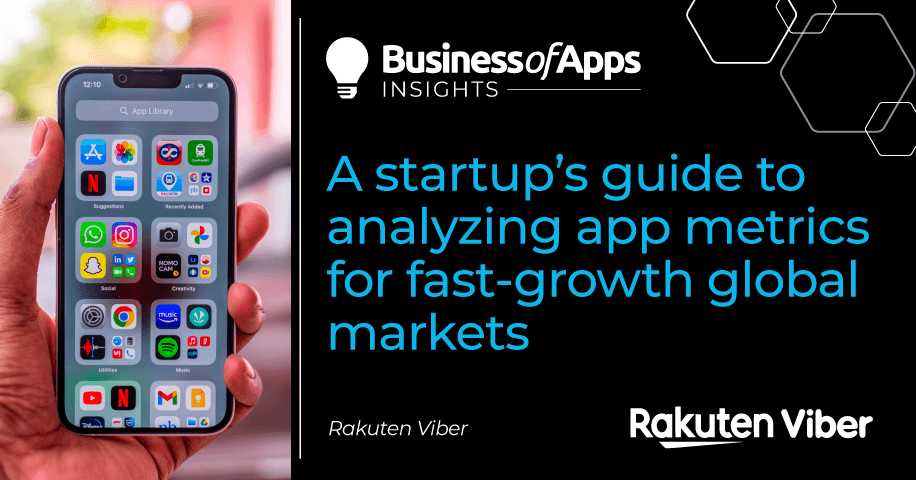The moment a startup starts scaling quickly is almost always an exciting time for everyone in the company. It feels like the payoff for all the hard work and late nights: recognition, a global consumer base, and money in the bank. It’s only natural that businesses in this position want to sit back and rest on their laurels for a moment. As appealing as that sounds, however, don’t give in to the temptation to do so.
There’s no one-size-fits-all playbook for entering global markets, and it’s all the more unpredictable if the metrics you’re collecting don’t give proper insight into the source of the growth or how to maintain it. Use this vital time at the early stage of development to do a thorough audit of your data analytics and insights. The metrics you collect, sort, and analyze now will play a significant role in the future development and growth of the company. The tools are already out there. It’s just a matter of having the right data strategy and the right data stack (or tools) in place to drive actionable insights.
Recognize metrics for a startup vs. an established company
The basic processes of analyzing app metrics tend to be largely uniform across startups and established companies. What differentiates companies and their data is how they use it, and how they use it is determined by their end goal. Early-stage startups tend to focus a lot more on growth and onboarding new users. In contrast, established companies with existing user bases look toward the goal of monetizing different aspects of their platform and user retention. Outlining a clear end goal will allow the team to collect only the necessary data. As a startup becomes more established, its goals will change and the data collected and analyzed should alter to support those goals.
Established companies have the advantage because they have years’ worth of data. They can compare benchmarks and analyze trends by comparing year-on-year stats, whether that is yearly revenue targets or even year-on-year growth. Startups, on the other hand, are often starting from scratch with little to no data available. Startups should already be collecting the data with the goal to compare benchmarks in years to come in mind, but they also must get creative with what little data is available now. You can also compare against some external competitor benchmarks, although this can be difficult to find at times.
If global statistics are unavailable, regional data could be measured and compared as benchmarks instead. Outline the company’s fast-growth markets and use those as benchmarks to measure the startup’s progress toward success. These metrics will unlock other insights as well, which we get to later on.
Be proactive in implementing methods to collect data
Work from biggest to smallest. The key to being able to highlight quality takeaways from the data is to understand the overall objective of the data collection. Based on this, the relevant data can be gathered, structured, and analyzed to drive insights while having measurable KPIs in place.
Look into programs that provide detailed analytics that is specific to app stores and the associated user bases. Many methods of analyzing metrics require proactive efforts and organizing, not just skimming over the key metrics after the fact. For any startup, deeply understanding user behaviour should be a high priority. In order to analyze user behavior, data can be collected by implementing third-party solutions. Mixpanel is an example of a business analytics service company that specifically looks at user interactions on web and mobile applications. Amplitude is another service used by thousands of digital disruptors like Instacart, DoorDash, and PayPal, to provide insights into who their users are and what actions lead to retention. For monitoring performance metrics, utilize Datadog or Grafana. Datadog is a SaaS platform, whereas Grafana is an open-source web platform that focuses on the visual side of data, enabling users to create charts, graphs, and dashboards.
Some of the data collected can come by the petabytes. In this case, seek out a data warehouse to not only process this data but to acquire new insights as well. AWS Redshift allows businesses to write key user and transaction-level data in its structured cloud-based data warehouses. Visualization tools, like Tableau, can help make dashboards so KPIs are accessible to a wider group of people in the startup, driving better decisions throughout the organization.
While analyzing app metrics may not be the top priority from day one, any insights that can be gleaned will have a drastic effect on decisions made down the line. What products should be developed? Which key areas show the greatest potential and should be the focus? And who is your core customer? Be proactive in implementing the necessary data collection methods, however, the key is using the right data management tools to segment, analyze, and unlock the answers you are looking for. Find the necessary data management tool dedicate to your desired goal.
Monitor regional differences to drive product innovation
If your app has users in multiple countries, analyzing and comparing user behaviours, expectations and competitive dynamics by country can uncover some interesting insights and differences that can lead to successful product innovation – or even alter the business strategy entirely. While each application will have different user behaviors, goals, and partnerships that will need honing in on, there are measurable metrics that will play a key role in future decisions about the application. Set KPIs and begin comparing the stats week on week, month on month, and so on to unlock answers that will drive fast growth.
For example, our data analytics have uncovered that messaging app users in the APAC region like to use stickers more than users in the CEE markets. This is due to different cultural preferences in each region. Tracking the engagement of this product over an extended period enabled us to understand its usage per region. Network strength also showed the number of days users were active or performing a specific activity during a specific time frame. So when using this metric to look at our sticker product, it told us what time of the day users most often incorporated them into messages. During holiday periods? To say hello? Or goodnight?
Track new registrations and installs each week and month on a very granular level to determine how quickly the app is growing in each region. Stronger user growth observed in one region compared to others can indicate either favorable product market fit in that region, different competitive dynamics, or a potential tailwind (e.g., smartphone adoption) that could be capitalized on by reallocating resources to unlock further growth. Track the negative metrics as well. This could entail monitoring app churn. How many times is the app uninstalled or an account deactivated? When did these events happen? Did an update of the UX result in a vast number of people leaving the app? Look at the number of referrals and invites from other users. If this number is low, consider implementing incentives specific to a region or securing a local partnership that will slow the current decline in user activity.
When taking all of the above into account and understanding these key metrics for each region, you can piece together a story of who your key customer is, and that may be different for every market. Users prefer localized content, so the content shared should differ accordingly. This insight can improve marketing campaign effectiveness, optimize products by showing local content as the default or generate more focused partnerships to bring additional content to users.
As startups expand and grow geographically, it is important for all regional teams to align on metric definitions and measurement units, as well as what source the data is being collected from as these factors can alter the results drastically if all are different. Inefficient decision-making would be inevitable if the APAC team was measuring a marketing campaign’s success one way and the EU team was measuring it differently, resulting in non-comparable Customer Acquisition Cost (CAC) findings. If there are a lot of cases where this happens, it could lead to organizations and leaders losing trust in the data and making more gut-based decisions.
Analyze metrics in a privacy-first way
There are a variety of tools that enable companies to collect data and analyze app metrics. While these are all valuable, it is unnecessary and potentially damaging to the core business to indiscriminately collect data without a real goal in mind. Data collection itself isn’t the problem, but how you choose to use it can be. That being said, if you don’t have a valid business reason to collect the data, don’t collect it. Too often businesses are collecting every piece of data from their users simply for the sake of it.
Collecting data metrics doesn’t require sacrificing user privacy. Metrics that share valuable data can still be collected while complying with regional privacy regulations like GDPR. Be transparent with users as to what data is being collected and keep them informed about any changes. Analyzing key metrics can have a drastic effect on any startup’s decision-making process, and play a significant role in its future growth.












